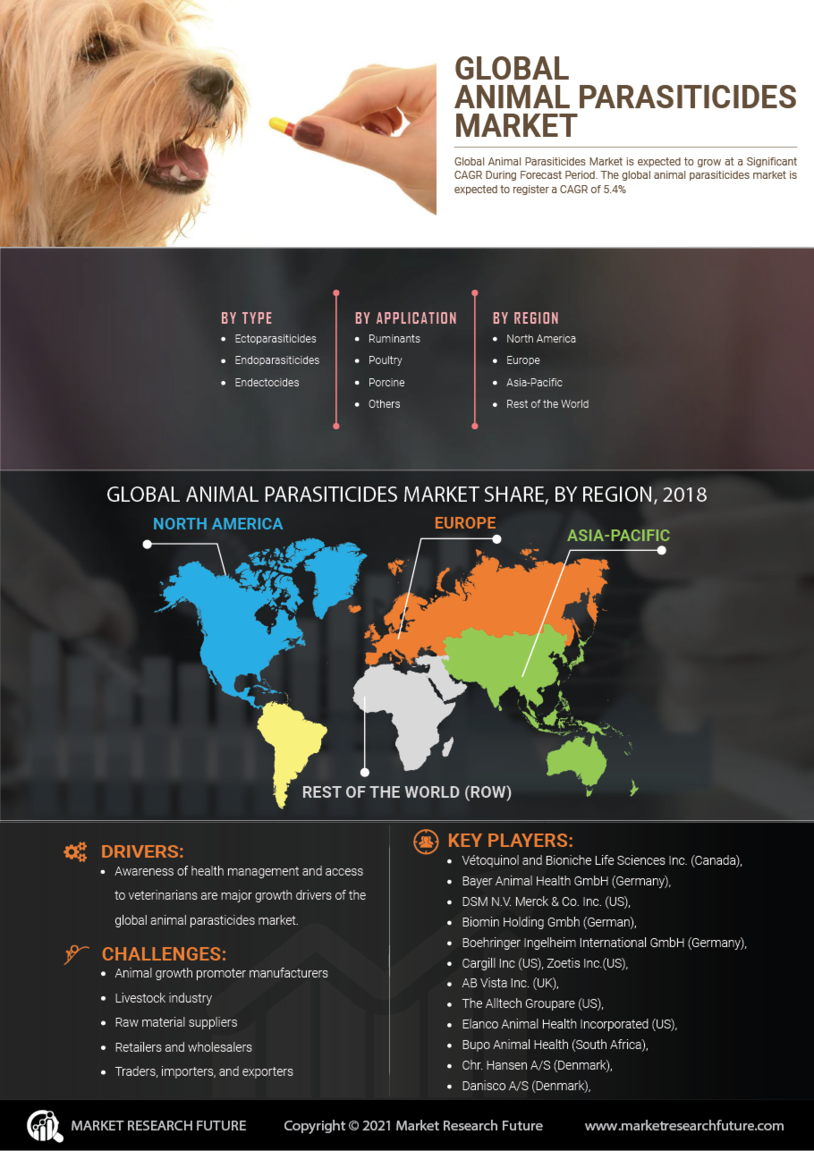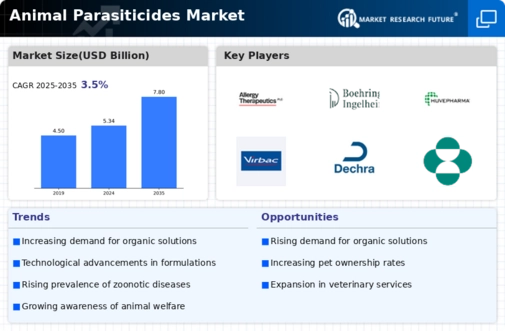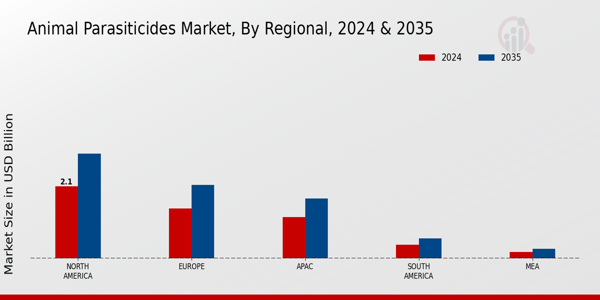Market Growth Projections
The Global Animal Parasiticides Market Industry is poised for substantial growth, with projections indicating a rise from 5.34 USD Billion in 2024 to 7.8 USD Billion by 2035. This growth is underpinned by a compound annual growth rate (CAGR) of 3.5% from 2025 to 2035. The increasing prevalence of parasitic infections in animals, coupled with rising awareness of animal health, is likely to drive demand for effective parasiticides. As the market evolves, stakeholders must adapt to changing consumer preferences and regulatory landscapes to capitalize on the opportunities presented by this growth.
Rising Demand for Animal Protein
The increasing global demand for animal protein is a primary driver of the Global Animal Parasiticides Market Industry. As populations grow and dietary preferences shift towards meat consumption, livestock health becomes paramount. Effective parasitic control is essential to ensure optimal growth and productivity in animals. In 2024, the market is projected to reach 5.34 USD Billion, reflecting the need for robust parasiticide solutions to maintain animal health and productivity. This trend is expected to continue, with the market anticipated to grow to 7.8 USD Billion by 2035, indicating a sustained focus on animal health management.
Advancements in Veterinary Medicine
Technological advancements in veterinary medicine significantly influence the Global Animal Parasiticides Market Industry. Innovations in drug formulations and delivery systems enhance the efficacy and safety of parasiticides. For instance, the development of long-acting formulations allows for less frequent administration, improving compliance among animal owners. These advancements not only boost the effectiveness of treatments but also contribute to the overall health of livestock and pets. As veterinary practices adopt these new technologies, the market is likely to see a steady growth trajectory, aligning with the projected CAGR of 3.5% from 2025 to 2035.
Increased Awareness of Animal Health
Growing awareness regarding animal health and welfare is driving the Global Animal Parasiticides Market Industry. Pet owners and livestock producers are becoming more informed about the impact of parasites on animal health, leading to increased spending on preventive measures. Educational campaigns and outreach programs by veterinary associations play a crucial role in this awareness. As a result, the demand for effective parasiticides is on the rise, with consumers seeking products that ensure the well-being of their animals. This trend is expected to contribute positively to market growth, supporting the projected increase in market value over the coming years.
Emerging Markets and Livestock Production
The expansion of livestock production in emerging markets is a significant driver of the Global Animal Parasiticides Market Industry. Countries in Asia, Africa, and Latin America are experiencing rapid growth in their livestock sectors, necessitating effective parasitic control measures. As these regions invest in modern farming practices, the demand for high-quality parasiticides is expected to rise. This trend is particularly relevant as the market is projected to grow from 5.34 USD Billion in 2024 to 7.8 USD Billion by 2035, reflecting the increasing focus on livestock health and productivity in these developing economies.
Regulatory Support for Animal Health Products
Regulatory frameworks supporting the development and approval of animal health products are vital for the Global Animal Parasiticides Market Industry. Governments worldwide are implementing policies that facilitate the introduction of new parasiticides, ensuring they meet safety and efficacy standards. This regulatory support encourages innovation and investment in the sector, allowing companies to bring advanced products to market. As these regulations evolve, they are likely to enhance consumer confidence in parasiticides, further driving market growth. The anticipated increase in market value to 7.8 USD Billion by 2035 underscores the importance of a favorable regulatory environment.






















